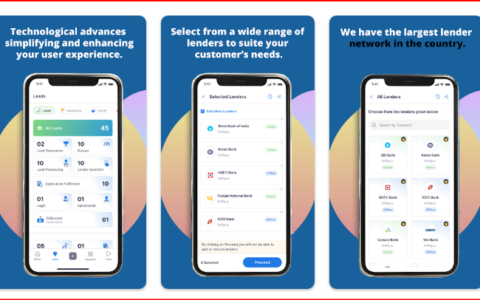
. Introduction
In the realm of career choices, government jobs often come with a mixed bag of perceptions. While some view them as secure, stable, and offering excellent benefits, others believe they entail long hours, bureaucracy, and a poor work-life balance. However, like any stereotype, these views may not always hold true. Let’s delve into the myths and realities surrounding work-life balance in government jobs.
One common misconception is that government jobs inherently demand long hours and offer little flexibility. While it’s true that certain roles may require occasional overtime or have rigid schedules, many government positions actually prioritize work-life balance. In recent years, there has been a growing emphasis on implementing flexible work arrangements, telecommuting options, and compressed workweeks within government agencies. These initiatives aim to accommodate employees’ personal lives while ensuring productivity and efficiency in their professional roles.
Moreover, government organizations often provide generous leave policies, including vacation time, sick leave, and parental leave, which can contribute to a healthier work-life balance. Additionally, the stability and security of government employment can alleviate some of the stress associated with job uncertainty, allowing employees to better prioritize their personal lives.
Despite these advantages, it’s essential to acknowledge that challenges to work-life balance can still exist within government jobs. Bureaucratic processes, hierarchical structures, and stringent regulations may occasionally impede flexibility and innovation. Moreover, certain roles, particularly those in essential services or emergency response, may entail irregular hours or high-pressure situations that can disrupt work-life balance.
Ultimately, achieving a satisfactory work-life balance in a government job often depends on factors such as individual preferences, organizational culture, and job responsibilities. While some may thrive in the structured environment and stability offered by government employment, others may find greater flexibility and fulfillment elsewhere. It’s essential to weigh the pros and cons carefully and consider personal priorities when pursuing a career in the public sector.

Myth 1: Government Jobs Equate to Long Hours and Stress
One of the prevailing myths about government jobs is that they demand long hours and are inherently stressful. This belief stems from the notion that bureaucracy slows down processes, leading to increased workloads and deadlines.
Reality: While it’s true that some government positions may require occasional overtime or dealing with pressing matters, the idea of perpetual long hours is not universal. Many government agencies have structured work schedules, with defined start and end times. Moreover, stress levels can vary depending on the specific role and department. Some positions may indeed involve high-pressure situations, but others offer a more balanced workload.
Myth 2: Limited Opportunities for Flexibility and Telecommuting
Another misconception is that government jobs lack flexibility, including options for telecommuting or flexible work hours. Many believe that rigid regulations and bureaucratic processes hinder the ability to adapt to modern work arrangements.
Reality: In recent years, government agencies have been increasingly embracing flexible work arrangements to enhance employee satisfaction and productivity. Telecommuting options, flexible schedules, and even compressed workweeks are becoming more common in various government departments. While there are still positions that require physical presence, many roles can be performed remotely, providing employees with greater flexibility to manage their work and personal lives.
Myth 3: Slow Career Advancement and Limited Opportunities
Some individuals perceive government jobs as dead-end careers, with minimal opportunities for growth and advancement. They believe that promotions are rare, and the hierarchical structure impedes upward mobility.
Reality: Contrary to popular belief, government agencies often have structured career paths with clear guidelines for advancement. While the process may not be as rapid as in the private sector, there are opportunities for career growth through internal promotions, training programs, and professional development initiatives. Employees can climb the ranks by demonstrating competence, dedication, and leadership skills, paving the way for career progression within the government sector.
Myth 4: Inflexible Leave Policies and Work-Life Imbalance
There’s a misconception that government jobs come with inflexible leave policies, making it challenging for employees to maintain a healthy work-life balance. Some believe that the demands of government work overshadow personal time, leading to burnout and dissatisfaction.
Reality: Many government agencies offer generous leave benefits, including vacation days, sick leave, and parental leave, to support employees in achieving a balance between work and personal commitments. Additionally, policies such as telecommuting and flexible schedules contribute to a more accommodating work environment. While workload fluctuations may occur, proactive measures are often in place to ensure employees can manage their time effectively and avoid burnout.
Myth 5: Lack of Innovation and Creativity
Another prevalent myth is that government jobs stifle innovation and creativity due to bureaucratic red tape and rigid protocols. Some believe that the hierarchical structure discourages new ideas and limits opportunities for innovation.
Reality: While bureaucracy can pose challenges, government agencies are increasingly recognizing the importance of innovation and creativity in addressing complex issues and serving the public effectively. Initiatives such as innovation labs, cross-functional teams, and partnerships with the private sector are fostering a culture of innovation within government organizations. Moreover, employees are encouraged to propose new ideas, streamline processes, and implement innovative solutions to enhance efficiency and service delivery.
Conclusion
In conclusion, while government jobs do present their unique set of challenges, it’s important to acknowledge that many of the myths surrounding work-life balance within this sector are not entirely accurate. With the continuous evolution of policies, shifts in work cultures, and a heightened focus on employee well-being. Government agencies are actively working towards creating environments that not only support work-life balance but also foster professional fulfillment. By debunking these misconceptions and embracing the realities, individuals can make more informed decisions about pursuing careers within the government sector. It’s becoming increasingly evident that achieving a satisfactory work-life balance in government roles is not just a lofty ideal but an attainable goal within today’s evolving work landscape.
Ultimately, what truly matters is finding the right fit – whether it’s within the public or private sector. where individuals can thrive both professionally and personally. Whether one’s passion lies in serving the community through government work or in pursuing opportunities in the corporate world. The key is to prioritize balance and fulfillment in one’s chosen career path. By doing so, individuals can lead more fulfilling and rewarding lives, contributing positively to both their professional endeavors and personal well-being.



